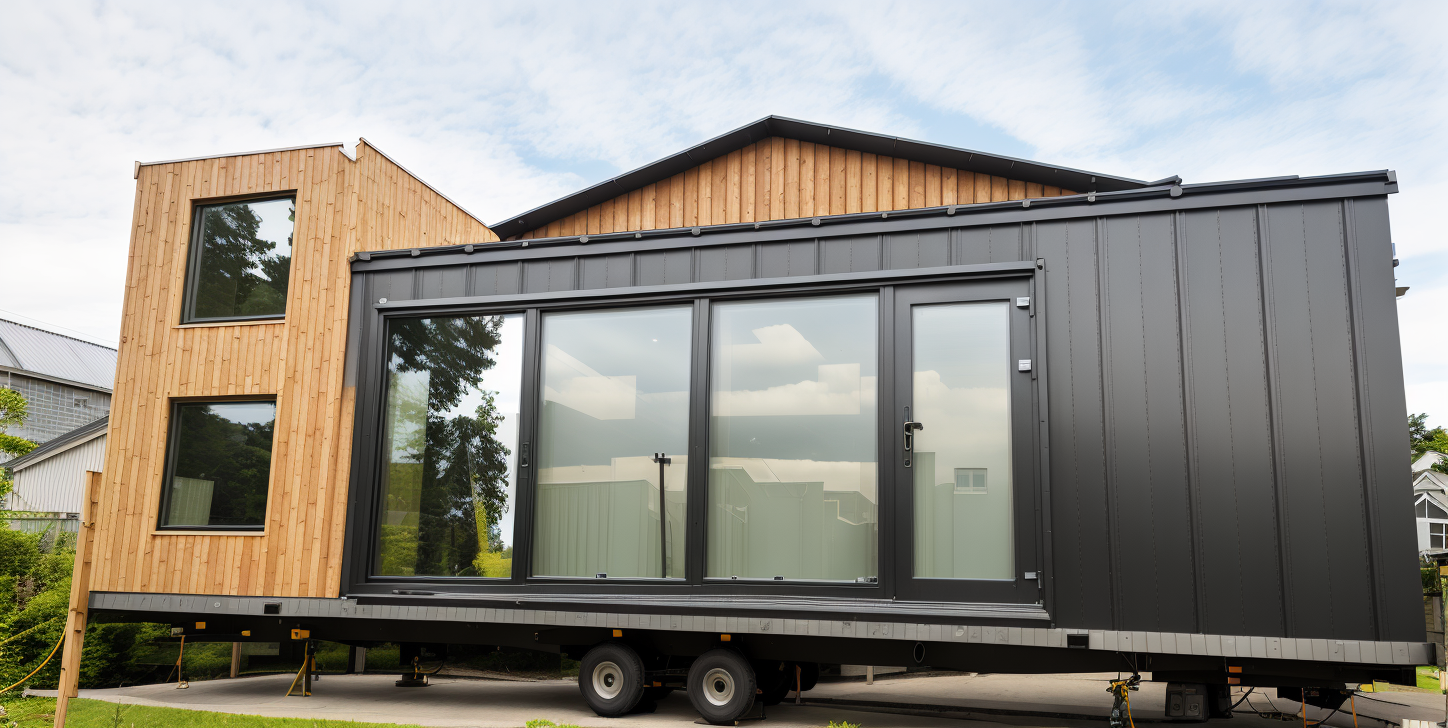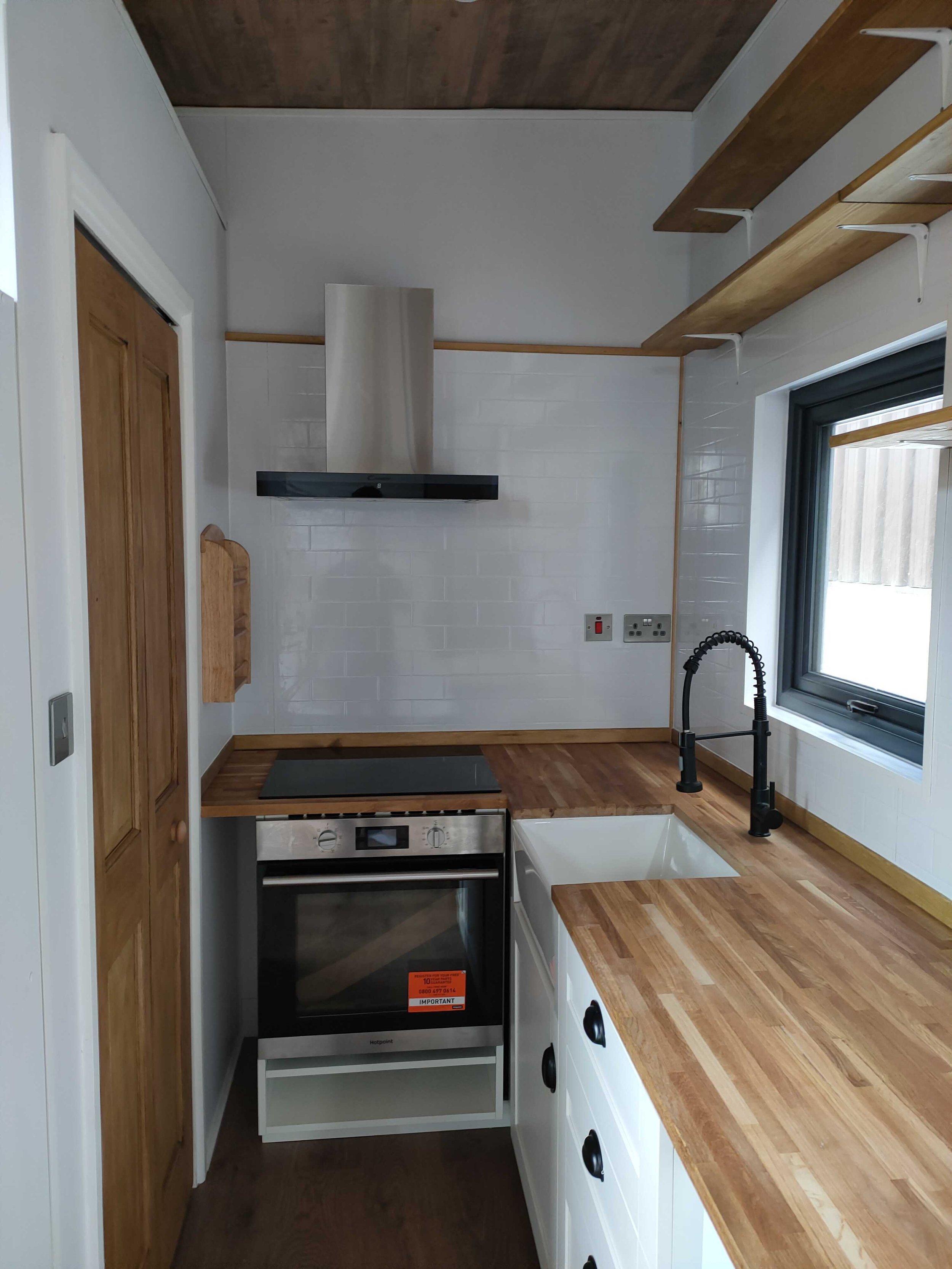Understanding The UK Laws Of a Tiny House
The Eden after a recent delivery
As with most countries, tiny homes are a relatively new concept which can be confusing to understand where they fit into the current written laws.
In general, tiny homes are designed and built to UK standards, therefore they will already cover the basic legalities. However, it is important to understand the laws to ensure you abide by them.
So, in this post, we're going to explain the following in more detail:
· Road Legality
· Planning laws (where you can and can't put your home)
· Council Tax (do you need to pay?)
Road Legality in your Tiny Home
Are you looking to buy a tiny home, to feel the freedom to roam and explore the best of what the UK has to offer? If that's a big ol’ YES, then making your home road-legal will be your top priority.
To start, let's take a look at sizing. A towable tiny home must be no larger than 2.55m wide to be road-legal in the UK, and 7m in length on a standard car licence. If you had a larger home in mind, you may want to consider choosing a more permanent location or changing your licence to category C1E (medium-sized goods vehicles with trailers) which can easily be obtained with lessons and a standard test.
Even with a C1E, your home will need to be 2.55m width to be road legal, and so you should check with your chosen company to ensure your tiny home fits the legal sizing for the UK.
As we can't speak for everyone, here at The Tiny Housing Co, but we include all homes on a standard park home trailer chassis, which is easily moved by a 4x4 / pickup on your own land or even a tractor. We don’t currently offer our general range to be on a 2.55m wide, towable chassis as in our experience, none of our customers have wanted to physically tow their tiny house down the M6, or pay the additional costs of buying and/or insuring a suitable vehicle that can tow it, for the potential move every few years.
Instead, we suggest you use a caravan haulage company that are not only insured for the job, but have years of experience ensuring that they get you from A to B, safely, and in one piece.
The Nomad Tiny House sited on a field ready to be moved into
What about the weight?
Just like legal sizing, there are also laws regarding how much weight you can legally tow on a road, but NOT on your own land. Interestingly, the date of which you passed your driving test will depend on how much you can tow on a standard driving licence.
If you passed your test before 1st January 1997, you may tow a vehicle and trailer combination of up to 8250kg. If you passed your test after 1st January 1997, you can tow a trailer not more than 3500kg (not including the weight of your car). Should you want to tow more weight than your category B licence allows you to, you can apply for a C1E licence allowing you to tow up to 12,000kg.
Aside from weight and size, the laws are rather limited and until the caravan laws change (which haven't been changed since 1960) your home is completely fine on the road as long as it fits the weight and size mentioned above.
When you work with us, we have taken the route of not providing road-legal, towable trailers for a few reasons which we’ve explained in our other blogs; but namely that we cannot build long-lasting, highly-insulated homes with high-quality, natural materials that are under 3000kg. This means that therefore we have the past 2 years only built them on static caravan trailers, which ARE movable on your land, but not on the road. Heavier, stronger, longer-lasting woods, and thicker walls, all result in a home that will truly last, keep you warm throughout the winter, and save you money on your energy bills.
The other benefits?
Most ‘touring caravans’ and their chassis don’t have a long shelf life, without serious repairs, especially if they have all manner of things inside them - think ovens, hobs, toilets, showers, beds etc. With our approach to longevity and sustainability, we believe that a tiny house doesn’t have to be towed on the road, and as such, falls under the general ‘caravan act’ rules, rather than a ‘tourer’ and as such can be placed just like a static would; without the poor quality materials that a static caravan brings.
If you want to learn more about our materials, why we’re taking the time to provide sustainable options for all manner of things, from the flooring to the interior walls, to the paint or the cladding, then read on by clicking the link below.
Planning Laws & Planning Permission for Tiny Houses UK
So the good news for those who are planning to place their new tiny house in their back garden, can do so in most cases without planning permission, as long as the size doesn't exceed 65 x 22 ft. (19.8m x 6.7m), this is because their current legal definition is classed as a caravan. The main requirement by law is that members of the household should use the tiny house as an ‘additional living space’, which means renting out the home would not be an option without permission, similar to a garden room or annex.
The tiny home cannot change the land it is sited on and must fit within the land of the house. It cannot be placed outside of this space, such as outside of a gate or the house’s overall ‘curtilage’, otherwise planning permission will be required. If you're looking to purchase or rent land for your home, planning permission will be required if the tiny home is going to be a permanent fixture on the land, just like you would with a normal home.
There are some grey-areas within this regard of ‘curtilage’, especially for those of you that live on a farm and plan to/already keep farm animals, as the tiny home can in some cases be classed as a dwelling for farmers, their workers or for additional living space. We feel the best thing to do, to clarify this further, if you wish to go down this route of not requiring planning permission, which is known as ‘Permitted Development’, is to simply contact your local planning officer or chat with a planning consultant in your area.
For all planning permission enquiries, it really is best to speak with your local planning office, as they can give you the best advice. Ensure that you get EVERYTHING in writing, as we’ve heard of stories where one planning officer gives the green light to something - verbally - only to have a new officer come in and rubbish the project.
Where can I put my Tiny House in the UK?
This is a good question. It’s something we get A LOT. You can legally put your tiny house in a number of places including;
Within the curtilage of your home/dwelling i.e in the garden
On a plot of land, such as farmland for a period of 60 days or you can place it there for longer under permitted development rights and/or with a certificate of lawful development
On a caravan site as tiny houses are movable homes on wheels, therefore they fall under the caravan rules & regulations - find sites that have long-term seasonal pitches
On a park home / residential home site - this can be done if your tiny house is built to specific standards such as BS:EN 3632:2015 (must be no more than 3.05m tall internally) which ours are!
On land where you’ve applied for planning permission within a residential area
On a glamping site for holiday let purposes (with planning permission approved)
On a certified site, offered as a site management building - check out ‘freedom camping’
On farmland / stables / equestrian land
Council Tax - Do you need to pay?
For those renting or purchasing land for your tiny home, you will be required to pay council tax as your tiny home will likely be your permanent residence. Those using their home as a holiday home, or as a secondary dwelling and have a full-time residence elsewhere will not be required to pay council tax.
Then there's that grey area again. Should you be placing your tiny home in your back garden, which is situated on your property, is not considered as a dwelling and is to be used as an additional living space by only members of that household. Therefore, a person from your household can live in a tiny home without paying council tax as the main dwelling is council tax liable, like a granny flat or annex would.
Note* During the time the tiny home is residing on your property, you will not need to pay council tax, however, as soon as you move it to private land, you will need to declare your new residence and arrange council tax accordingly.
Are tiny houses legal in the U.K?
Absolutely! A tiny house in the eyes of the law is a caravan, that is if it’s on a trailer or it’s movable, such as on a temporary foundation and removable via a truck. If a tiny house doesn’t have a trailer, then it could be classified as either a granny annexe / ancillary building / compact house and even a caravan still as the term does not cover a structure built for human habitation to ‘must’ have a trailer. Whatever classification it comes under, tiny houses are legal in the UK. The legality part comes into where to place your tiny house and how long you live in it. As we mentioned above, for it to be a legal structure, you’ll more than likely need to apply for planning permission, if it has wheels or not.
Here’s the legal definition of a ‘caravan’;
Section 29 (1) of the Caravan Sites and Control of Development Act 1960 defined a caravan as:
“… Any structure designed or adapted for human habitation which is capable of being moved from one place to another (whether being towed, or by being transported on a motor vehicle or trailer) and any motor vehicle so designed or adapted.
You can legally live within the tiny house in a few different situations;
In your garden or within the curtilage of your home if it’s used as a secondary building - not as the main dwelling.
Under permitted development rules, you can place a tiny house on your land like you would a caravan (there are circumstances when you can’t potentially do this, such as in an Area of Outstanding Natural Beauty (AONB) or near a heritage site (on the Stonehenge site for example).
On a caravan site
On a park home site
On a glamping site or holiday let for commercial purposes
On farmland for agricultural purposes, worker’s buildings etc
Things can get a little complicated with the planning issues surrounding tiny houses, especially site licenses, but the main point is that owning and living within a tiny house is completely legal under many circumstances.
We hope that we've given a clear understanding of the most concerning UK laws for tiny homes. If you have questions, feel free to get in touch and we'll be with you shortly. You can also read more about planning permission here, in the 2nd part of the article.
If you have any further questions about law-related issues and our tiny home, please do get in touch.







